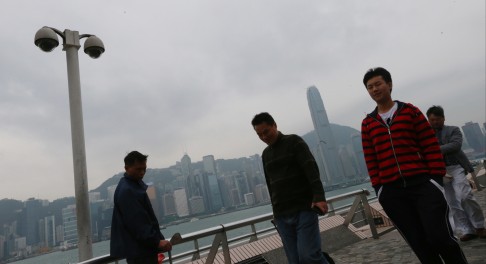
No one can say how many CCTV cameras are spying on Hongkongers
While the technology has some legitimate uses, critics say privacy is being sacrificed
Big Brother is watching and he's getting bigger and smarter every day.
One of the largest government bodies in Hong Kong, the Leisure and Cultural Services Department, manages more than 1,700 public facilities, including parks, pools, beaches, sports grounds, theatres and town halls.
It also keeps an eye on these facilities with 3,675 CCTV, or closed-circuit television cameras, all in the name of protecting us.
The department's all-seeing surveillance cameras are just a small portion of the total number across Hong Kong, but there is no exact figure because there are no rules governing their use.
Recently, Hongkongers saw the real-life value of CCTV coverage when grainy, low-resolution images of two suspects in the high-profile stabbing case of former newspaper editor Kevin Lau Chun-to were released to the public just hours after the attack.
Proponents say CCTV technology keeps us safe, but there are few definitive studies to show exactly how these spy cameras prevent crime.

Police can access footage from cameras operated by other public and private bodies, which allows them to tap into a network of millions of images.
But police, along with most government departments and private companies, such as property developers, refuse to disclose the number of times CCTV footage has been used to investigate illegal activities.
The only department to reveal the extent of requests was the Leisure and Cultural Services Department, which said that last year, police asked for CCTV footage from its cameras 141 times.
Tuen Mun district saw the most requests, followed by Yuen Long and Kwun Tong.
Rough estimates by the show that there is one camera for every 140 people in Hong Kong. By comparison, the UK - which is regarded as the country with proportionally the most CCTV cameras - has an estimated one for every 11 people, or 5.9 million cameras.
Even the Privacy Commission does not know exactly how many CCTV cameras have penetrated the city's landscape. But a spokesman does admit that the use of the small, inconspicuous devices has "become increasingly widespread".
